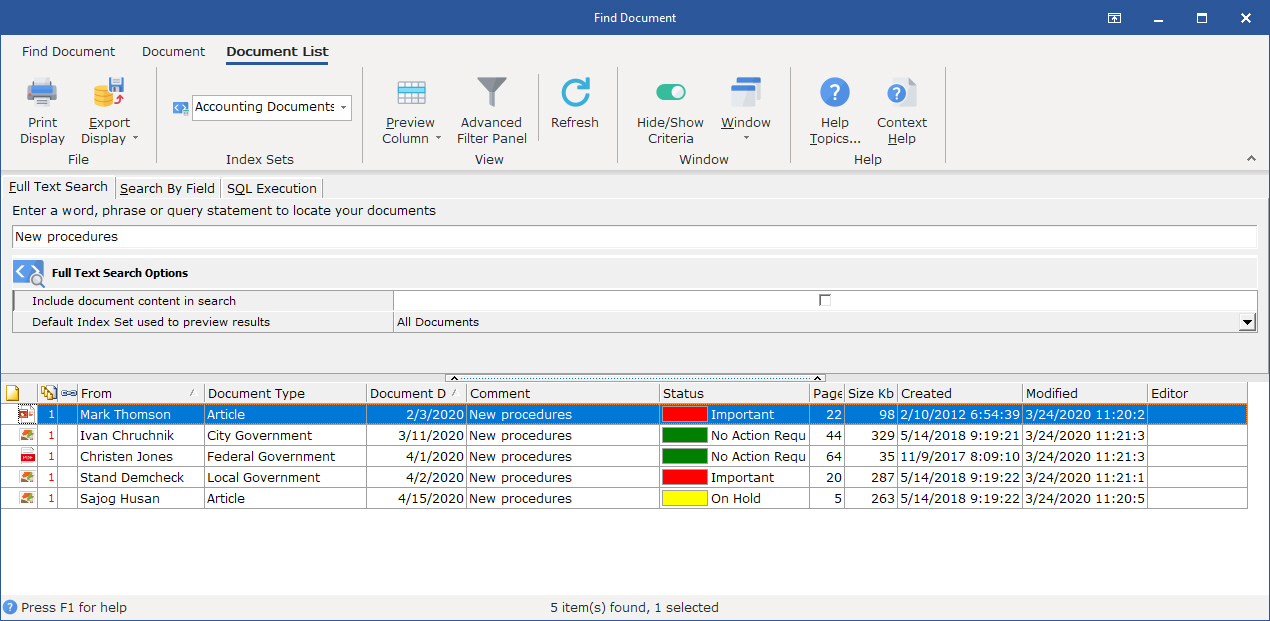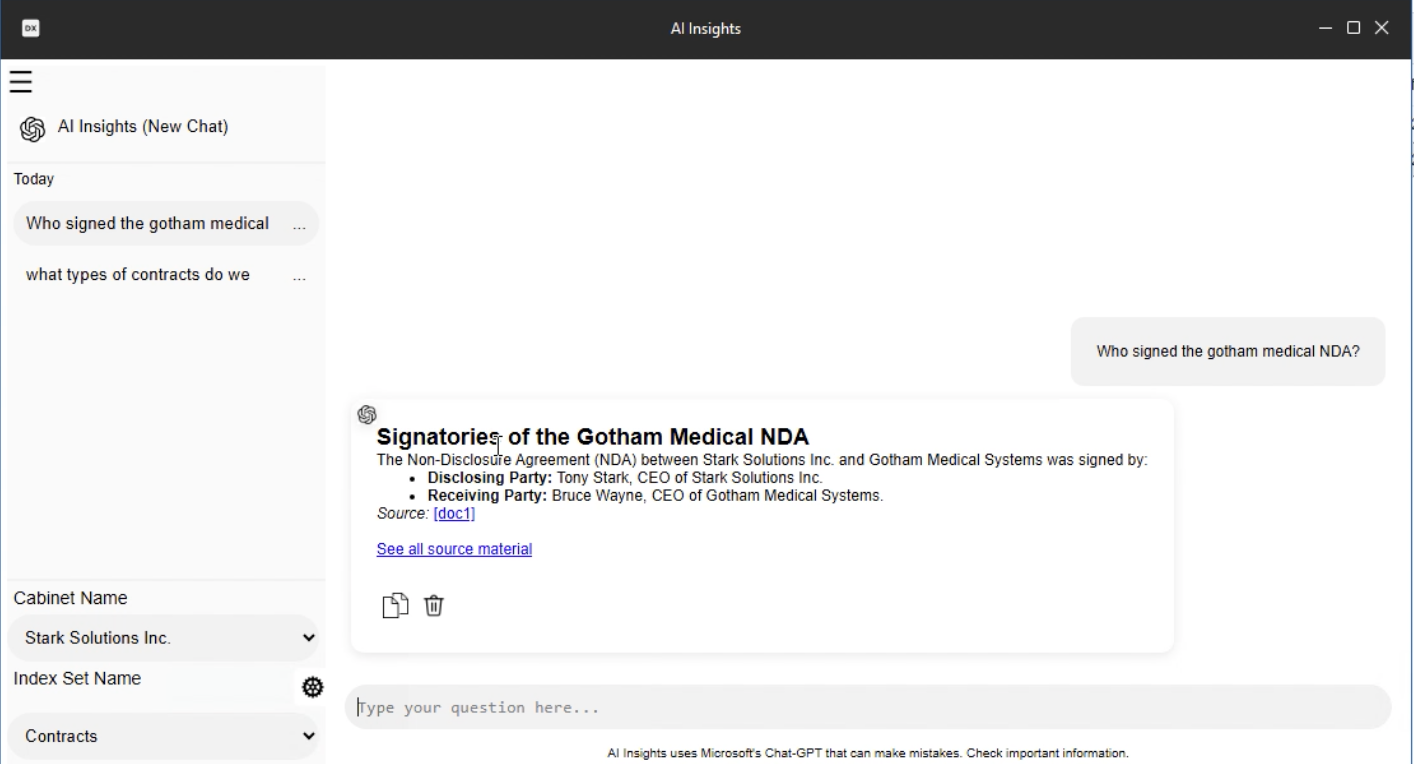With this hands-on guide to AI document chat, you’ll transform research, gain insights from your unstructured data, and make better business decisions.

In information management, AI chat provides an alternative to endlessly scrolling through folder structures or manually compiling documents for analysis. Using natural language prompts, you get direct responses—summaries, comparisons, or deeper insights—drawn from your own knowledge base.
But the real power of AI document chat goes beyond curiosity-driven chatting. AI chat has the potential to accelerate document research and analysis, but success depends on a few things: setting up your document repository, framing your questions, validating your answers, and applying the insights to drive measurable business outcomes.
Prefer to listen to the story?
The problem facing most organizations isn’t a lack of information—it’s too much of it. Employees dig through mountains of files, searching for the right clause in a contract, trying to stitch together key tasks across meeting notes, or pulling compliance language from past policies. Hours are lost, and it's hard to gain any actionable insights.
AI chat solves the challenge of manually parsing information, pulling the relevant data, and performing robust analysis. With document-based AI chat, you’ll turn static archives into living knowledge resources without needing additional time, resources, and staff.
As long as you know how (and when) to use it.
AI chat is powerful, but it isn’t always the right tool. It’s helpful to know when traditional search suffices and when to use natural language AI.
Standard search works well when:

Consider AI chat when:
Leveraging an AI chat tool is, in a sense, employing a hybrid search model, wherein the AI conducts a standard search using indexing information to find specific documents, then uses those documents as context for deeper reasoning and analysis.
AI is only as good as the information it can access. Centralize your document repository, clean up duplicates, enforce version control, and apply metadata consistently. Well-prepared data makes for stronger, more reliable insights.
Best practice tip: A document management system with automated tagging and filing ensures that your rules are consistently enforced, keeping tags and filing standardized and making document searches faster and more reliable.
Select an AI chat tool that enables retrieval-augmented generation (RAG), ensuring the AI can access and refer to your actual business documents. This ensures responses are contextually relevant and traceable. For trust and auditability, prioritize solutions that cite their sources so you can always review the original document.

Prompt quality determines output quality. Broad questions are fine to start, e.g., “Summarize key risks in our compliance reports,” and then refine as needed, e.g., “Which reports flagged vendor data-sharing risks in 2023?” Think of prompts as the queries you would ask a skilled analyst—clear, specific, and layered.
An effective session often takes multiple rounds of interaction. Treat AI chat like a research assistant—ask, refine, and build off prior responses until you get the exact insight you need. This iterative method helps move beyond surface-level answers.
Don’t assume AI outputs are 100% accurate without verification. Cross-check answers against original documents, especially when decisions carry risk. Build “trust, but verify” into your workflow to maintain confidence and accountability.
Best practice tip: A private, knowledge-based AI chat tool will be grounded in your company information, so hallucinations are less frequent.
Analysis is only valuable if it informs decisions. Use AI-generated summaries in executive reports, apply insights for faster compliance review, and back up decisions with evidence drawn directly from your document base. AI chat should not be a novelty—it should become a tool for action.
Track success metrics, like time saved per research task, reductions in manual review, and improved accuracy in reporting.
The future of document management isn’t about storing more—it’s about using more. With the right preparation, prompting, validation, and integration, AI chat transforms static archives into living, decision-ready knowledge bases.
As you explore these methods, remember that not every output needs to be accepted at face value; the power lies in balancing automation and human oversight. Thoughtful adoption pays dividends in speed, confidence, and clarity for any content-heavy workflow.
DocuXplorer has built its AI Insights with this same principle in mind: responses cite the documents they are based on, so you can always click back to verify and trust the information. Whether you use DocuXplorer or another solution, the real advantage comes from embedding AI chat into your document practices—bridging the gap between stored information and actionable decisions.
Interested in learning more?